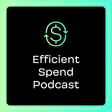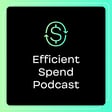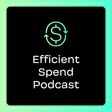
The Power of Social Selling for B2B Growth | Laura Erdem
SUBSCRIBE TO LEARN FROM PAID MARKETING EXPERTS 🔔
The Efficient Spend Podcast helps start-ups turn media spend into revenue. Learn how the world's top marketers manage their media mix to drive growth!
In this episode of the Efficient Spend Podcast, Laura Erdem, Sales Manager at Dreamdata, discusses the art of social selling and its impact on aligning sales and marketing efforts. Laura delves into building brand trust through authentic engagement, the role of content consistency across touchpoints, and the balance of organic versus paid strategies, offering actionable insights for developing long-term business relationships.
About the Host: Paul is a paid marketing leader with 7+ years of experience optimizing marketing spend at venture-backed startups. He's driven over $100 million in revenue through paid media and is passionate about helping startups deploy marketing dollars to drive growth.
About the Guest: Laura Erdem is a sales manager with over four years of experience driving growth for Dreamdata, where she leads the US sales team in outbound strategy, sales excellence, and team development. With a proven track record of closing major enterprise deals and building sales practices from scratch, she is passionate about aligning marketing and sales to drive measurable impact.
VISIT OUR WEBSITE: https://www.efficientspend.com/
CONNECT WITH PAUL: https://www.linkedin.com/in/paulkovalski/
CONNECT WITH LAURA: https://www.linkedin.com/in/lerdem/
EPISODE LINKS:
https://dreamdata.io/blog
https://www.salesforce.com/blog-hub/
https://buffer.com/resources/
https://www.socialmediatoday.com
https://sproutsocial.com/insights/social-strategy/
https://contentmarketinginstitute.com


